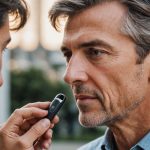Revolutionizing Competitive Rowing: How Augmented Feedback Devices Maximize Stroke Efficiency and Performance
In the world of competitive rowing, every fraction of a second and every ounce of efficiency can make the difference between victory and defeat. With the advent of advanced technologies, rowers and coaches are now leveraging augmented feedback devices to optimize performance, enhance training, and gain a competitive edge.
The Role of Technology in Rowing
Technology has transformed the landscape of sports, and rowing is no exception. Modern rowing machines and wearable devices are equipped with sophisticated sensors and AI-driven algorithms that provide real-time data on various aspects of a rower’s performance.
In the same genre : Transforming live mountain biking events: how drone technology is elevating broadcast coverage
Real-Time Data and Feedback
One of the key benefits of augmented feedback devices is their ability to provide real-time data. For instance, the AUGLETICS Eight rowing machine comes with a high-resolution 15.6″ touch display that offers immediate feedback on rowing technique, resistance levels, and physiological data such as heart rate and calorie consumption[3].
- Real-time movement feedback
- Adjustable resistance levels
- Heart rate monitoring
- Calorie consumption tracking
- Training evaluation and storage
This real-time feedback allows rowers to make instant adjustments to their technique, ensuring that they are optimizing their stroke efficiency and performance during every training session.
Have you seen this : Transforming live mountain biking events: how drone technology is elevating broadcast coverage
Enhancing Stroke Efficiency
Stroke efficiency is crucial in competitive rowing, as it directly impacts speed and endurance. Augmented feedback devices help rowers fine-tune their technique by providing detailed insights into their rowing mechanics.
Biomechanical Analysis
Advanced rowing machines often include virtual coaches that analyze a rower’s biomechanics and provide corrective feedback. The AUGLETICS Virtual Coach, for example, uses data from the rowing ergometer to motivate and guide the rower, helping them improve their motor skills, coordination, and body awareness[3].
- Endurance training: Adjusting resistance for cardio workouts
- Strength training: Targeting specific muscle groups
- Coordination training: Improving complex movement sequences
- Real-time technique correction: Adjusting footplates and grip
By focusing on these aspects, rowers can achieve a more efficient stroke, reducing energy expenditure and increasing overall performance.
Personalized Training Programs
Personalized training programs are becoming increasingly popular in competitive sports, and rowing is no exception. Using data analytics and AI-driven algorithms, coaches can tailor rehabilitation programs and recovery protocols specific to each athlete’s unique physiology and injury profile.
Data-Driven Insights
Companies like Philips are pioneering the use of wearable technology and cloud-based AI models to monitor athletes’ health and performance. For rowers, this means that coaches can create bespoke training plans based on real-time data from wearable sensors and imaging technologies[1].
- Tailored rehabilitation programs
- Recovery protocols based on individual physiology
- Injury risk anticipation using historical data and biomechanical assessments
- Real-time adjustments to training regimens
This personalized approach not only speeds up recovery times but also reduces the likelihood of re-injury, ensuring that athletes can perform at their best consistently.
The Impact of Augmented Feedback on Coaches and Athletes
Augmented feedback devices have a significant impact on both coaches and athletes, enhancing their ability to optimize performance and make data-driven decisions.
Coaches’ Perspective
Coaches play a critical role in interpreting the data provided by augmented feedback devices. By analyzing this data, coaches can identify areas where athletes need improvement and develop targeted training strategies.
- Identifying technique flaws
- Developing customized training plans
- Monitoring progress and adjusting strategies
- Enhancing communication with athletes
Manish Wadhwa, Chief Medical Officer for Philips Ambulatory Monitoring & Diagnostics, emphasizes the importance of combining data from wearable sensors with insights from imaging technologies to create bespoke rehabilitation plans. “By combining data from wearable sensors with insights from imaging technologies, we can create bespoke rehabilitation plans,” he said. “This personalized approach allows us to optimize recovery timelines and get athletes back in peak condition swiftly”[1].
Athletes’ Perspective
For athletes, the use of augmented feedback devices can be both motivating and enlightening. Real-time feedback helps athletes understand their performance better and make immediate adjustments.
- Immediate feedback on technique
- Motivation through real-time progress tracking
- Enhanced self-awareness of physical condition
- Ability to adjust training intensity and focus
Athletes using the AUGLETICS Eight, for example, can log their training data via a personal login and receive a clear and informative display of their performance metrics. This not only helps them track their progress but also keeps them motivated and focused on their goals[3].
Future of Competitive Rowing: Integration of AI and VR
The future of competitive rowing looks promising with the integration of artificial intelligence (AI) and virtual reality (VR) technologies.
AI-Powered Predictive Models
AI-powered predictive models can anticipate injury risks based on historical data, biomechanical assessments, and environmental factors. This proactive approach not only mitigates injury but also enhances performance by fine-tuning training regimens in real time[1].
- Predicting injury risks
- Fine-tuning training regimens
- Enhancing performance through real-time adjustments
- Extending athletes' careers by preventing injuries
Gupta from Philips highlights the potential of AI in predictive sports medicine: “Looking forward, the next evolution of working with AI could be applied to a whole new era of predictive sports medicine. Imagine the possibility of being able to prevent injuries before they occur, thereby extending an athlete’s career and maximizing their potential”[1].
Virtual Reality Training Simulations
Virtual reality (VR) training simulations are also gaining traction in sports, including rowing. These simulations provide a risk-free environment where athletes can practice and improve their skills without the physical strain of real-world training.
- Immersive training environments
- Realistic scenario simulations
- Enhanced retention rates (up to 75%)
- Faster training times (4x faster than traditional methods)
Studies have shown that VR training increases retention rates significantly compared to traditional methods and makes learners more confident in applying their skills post-training[3].
Practical Insights and Actionable Advice
For those looking to integrate augmented feedback devices into their rowing training, here are some practical insights and actionable advice:
Choosing the Right Equipment
When selecting a rowing machine or wearable device, consider the features that align with your training goals. Look for devices that offer real-time feedback, adjustable resistance levels, and the ability to track physiological data.
- High-resolution display for real-time feedback
- Adjustable resistance levels for varied training
- Heart rate and calorie consumption tracking
- Virtual coaching for technique improvement
Creating a Balanced Training Plan
A balanced training plan should include a mix of endurance, strength, and coordination training. Use the data from your augmented feedback devices to tailor your training sessions accordingly.
- Endurance training: 30-60 minutes, difficulty level 1-5
- Strength training: Targeting 85% of muscles, adjusting resistance
- Coordination training: Improving complex movement sequences
Monitoring Progress and Adjusting Strategies
Regularly monitor your progress and adjust your training strategies based on the data provided by your augmented feedback devices. This will help you stay on track and achieve your performance goals.
- Regularly review training data
- Adjust training intensity and focus
- Communicate with coaches for personalized feedback
- Stay motivated through real-time progress tracking
The integration of augmented feedback devices in competitive rowing is revolutionizing the sport by maximizing stroke efficiency and performance. With real-time data, personalized training programs, and the potential of AI and VR technologies, athletes and coaches have unprecedented tools at their disposal.
As we look to the future, it is clear that technology will continue to play a pivotal role in enhancing athletic performance. By embracing these innovations, rowers can achieve new heights of excellence, ensuring that the sport remains as competitive and thrilling as ever.
In the words of Manish Wadhwa, “If applied to athletes, this technology offers the potential to monitor multiple heart rate parameters, including resting, maximum, sustained, and recovery rates during training sessions, and heart rate variability. By amalgamating these HR parameters and correlating them with athletic performance, we may be able to direct athletes on how best to train in order to achieve peak results while minimizing the risk of overtraining”[1].
As the world of competitive rowing continues to evolve, one thing is certain: the future is bright, and it is driven by technology.











